‘Bride’s best friend’ grows local roots
As wedding season explodes, a florist takes to the greenhouse
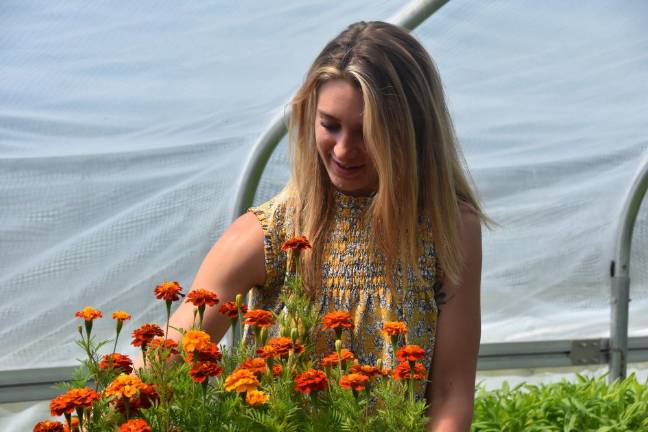
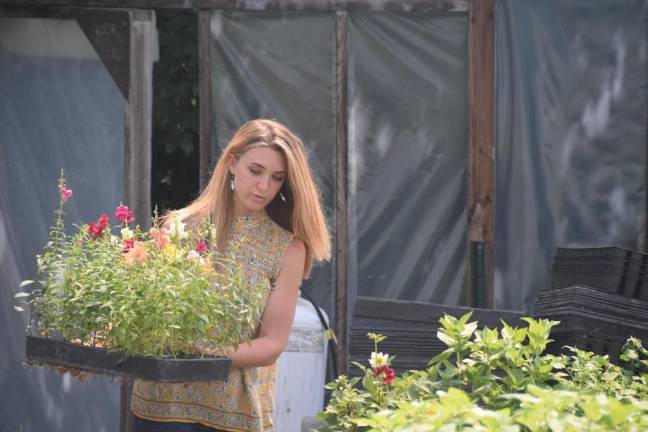
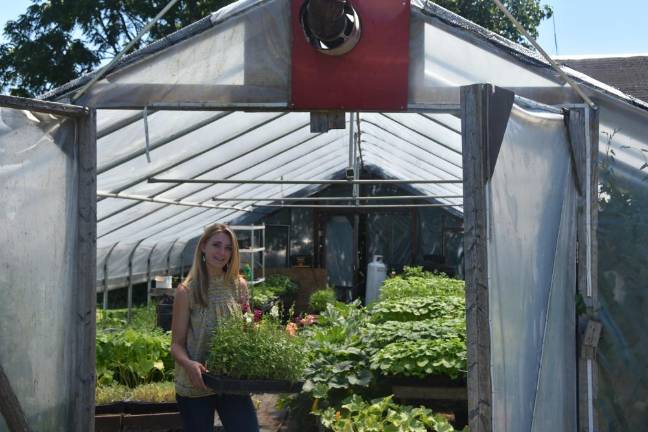
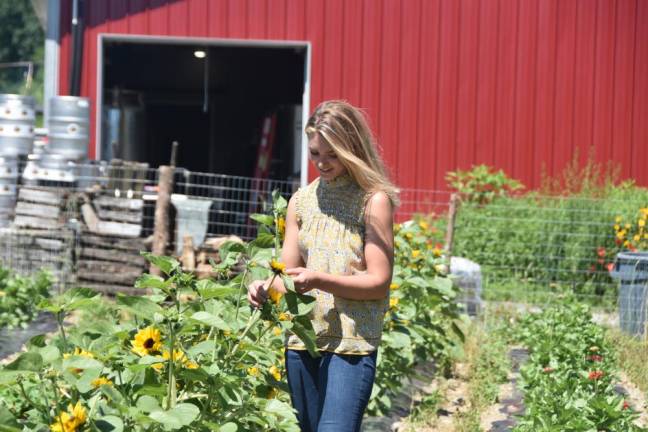
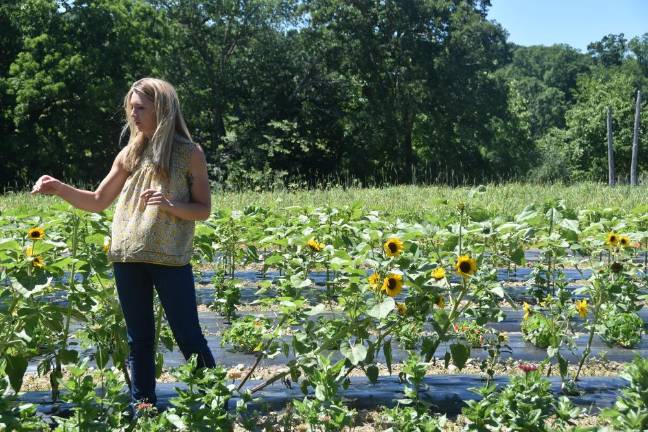
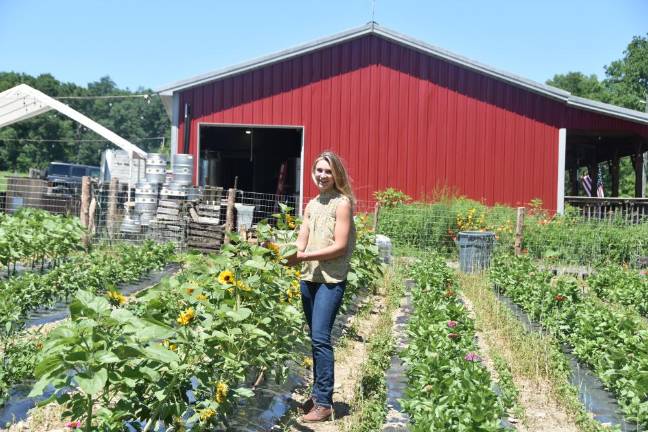
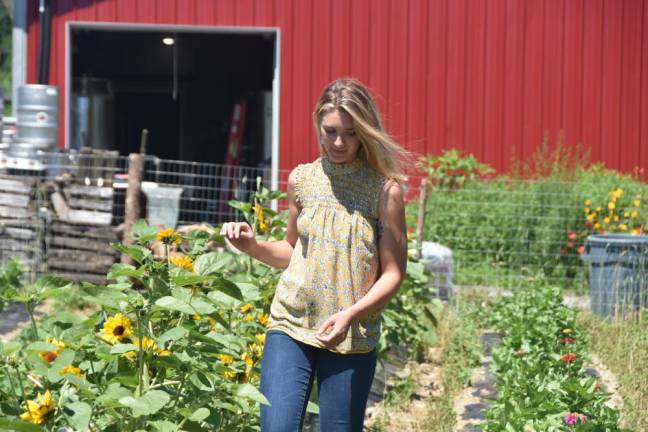
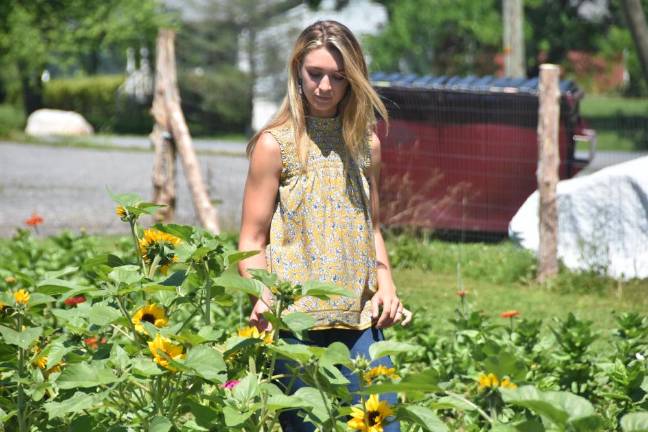
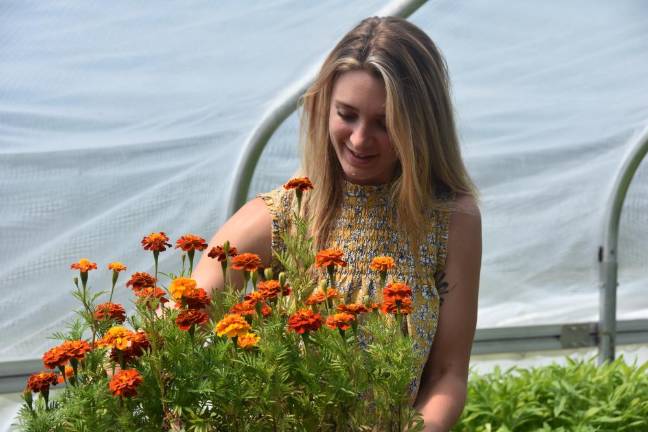
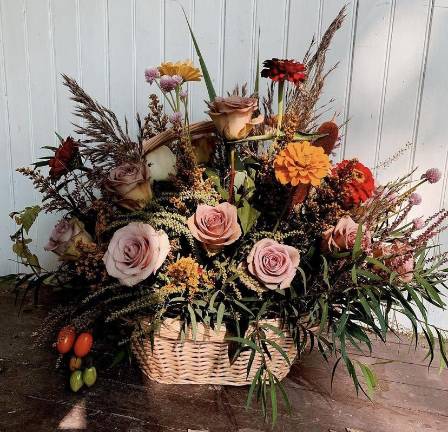
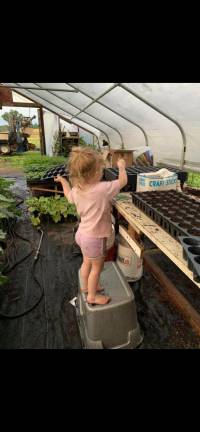
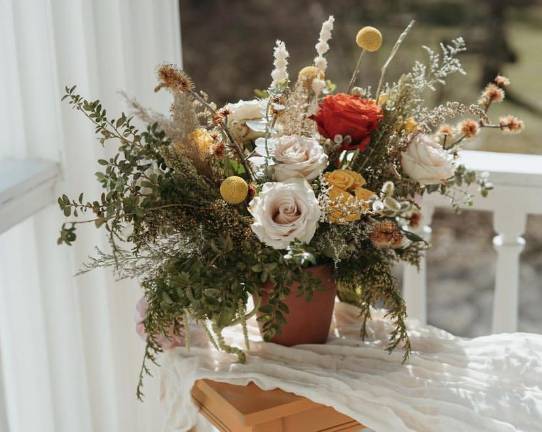
Sarah Hambrick was 19, bouncing from major to major at Dutchess Community College, the winter she took a seasonal job at a florist in Chester, NY. As it happened, the longtime owner of Chester Greenery & Gifts was about to retire. “I didn’t know what I wanted to do with my life, so I was like, maybe this is it,” said Hambrick.
“I came home one day, told my parents I was going to buy the flower shop,” said Hambrick, who grew up in Washingtonville, the oldest of five siblings. “Didn’t ask, kind of told them.” Her areas of study had included pharmaceuticals, phys. Ed, and veterinary – nothing, she laughs, remotely to do with flowers. Her mom and dad were surprised, she said, but “100 percent supportive.”
Denied a loan, Hambrick used $5,000 in savings to buy the business on Main Street. It came with a shed, cooler and all the supplies to run the business for three years, thanks to the previous owner’s habit of buying in bulk. “Most people start from zero. I kinda started from step 22,” she said. She opened her door, under the name Chester Hometown Florist.
YouTube was her teacher, especially when it came to funeral arrangements, which tend to be more strictly traditional than bridal arrangements.
Regulars had mixed reactions to the change of ownership, said Hambrick. “Some people were all about it, and some were like, oh, you’re like 12. I’m like yeah, I’m trying.”
Three years later, Hambrick gave birth to her daughter on a Thursday; by Saturday, Virginia Grace was at the shop with her, where she became a fixture – first an infant in a swing, then a toddler on a play mat. Mom and daughter grabbed pizza for lunch at Main Street Pizzeria, steps away. “It was a blessing in disguise because I got to be with her and still make money and be financially independent,” said Hambrick. Now 3, Virginia still greets people with a shopkeeper’s “good morning” or “good afternoon” – though they no longer have the brick-and-mortar store.
Hambrick closed her shop after the pandemic laid waste to businesses like hers. Flowers, as she put it, “are only essential if you’re planning a wedding,” and brides were cancelling. She landed a job as head floral designer at Mohonk Mountain House. It was an ideal gig in a lot of ways – including meeting the Smileys, the family that owns the historic hotel, who impressed upon her that every business starts small. But as for being away from her daughter all day every day, “I wasn’t a big fan,” said Hambrick.
She decided to go freelance, renaming her operation Sarah May Floral Design. She would focus on floral arranging for weddings and events, a sector that’s exploding right now as the bottleneck of deferred festivities comes unstuck. Working out of her farmhouse in Blooming Grove allows her not only to be with Virginia, but also to eliminate the bulk of her overhead. “Since closing the shop, I’ve never been doing better,” said Hambrick, now 25. “I definitely don’t regret anything. I loved having a storefront for four years, getting to know the locals. But since closing it, I really have enjoyed an ability to invest my time other places.”
Wedding season is shaping up to be hectic, with 45 weddings on her calendar this year. Each one requires 20 to 30 hours of Hambrick’s time: from the initial email and walking the venue, to the designing, picking, making and delivering of the bouquets, and her least favorite part: the invoicing.
She’s so slammed that she canceled her own wedding – which she’d been planning since before Covid – after four or five brides inquired about the same weekend in September. She’s hoping to push it back to September of next year, she said, “but we’ll see.” Early fall has always been prime time in the Hudson Valley, as the leaves start to turn, and never moreso than this year, with inquiries pouring in from points south and east of Westchester. “There are people who still haven’t gotten married from 2020. Maybe 2023 or 2024 will be back to normal,” she said. “The number hopefully will start to plateau.”
Hambrick had always enjoyed buying flowers, browsing cooler upon cooler at wholesalers like Alders, in Campbell Hall, NY, which might get them from California or even Europe. But growing some of her own made sense for a lot of reasons, from environmental to financial. Lingering supply chain shortages have resulted in inflated flower prices that are at least 20 percent higher than usual, sometimes much more. Roses, for instance, used to cost $1.15 a stem, said Hambrick, and now they go for between $2.15 and $2.75 each. “Two years ago when you did weddings you could book florals two weeks before the date. Now, you have to do it four to five months in advance.”
Though her weekends are spoken for, Hambrick’s weekdays are suddenly much more her own. Freed of store duties, she’s taken the opportunity to get her hands dirty, literally, in the back end of the flower business. “To be an expert in what you do, you have to know what it is start to finish,” she said.
There was just one catch. “I’m not very, like, farmy,” she admitted, aside from the horses she grew up around. “We never grew anything more than, like, freakin’ pumpkins, when you threw [your Halloween jack-o’-lantern] onto the side of the house.” So she found a partner with growing in his bones: Kevin Kaarlsen, 28, grew up sandwiched between farms in the black dirt of Chester. After eight years managing a farm, he works for the Village of Goshen Department of Public Works – and leases about five acres of farmland on the side, growing vegetables in addition to raising pigs, chickens and beef cows, to sell at a new farmstand he is setting up field-side, next to Long Lot Brewery in Chester.
“I did some flowers,” said Kaarlsen, “but when I was talking to Sarah, ‘specially with the pandemic, she needs someone to grow flowers, so...” Why not? Along with his usual sunflowers and zinneas, he added about an acre’s worth of flowers to the mix: gomphrena, strawflowers, dahlias, snapdragons, poppies. “I always liked the sunflowers, they’ve always been my favorite, but there’s a lot of different ones I’m excited to see what happens,” he said. “It’s a learning curve for me, too, but I’m willing to try it, grow some.”
Hambrick sourced seeds in “premium” colors: neutrals like tan, taupe, pastels, mauve, dusty rose. “It’s kind of a Boho style this year,” explained Hambrick. “Texture for bouquets always changes, like fashion.”
In one of Kaarlsen’s greenhouses, Hambrick shows me a flat of strawflowers started by Kaarlsen, lush and green, and a flat that she started: nothing – yet. “I didn’t think it was that hard,” she said with a good-humored shrug. “It’s definitely not for everybody. Sometimes it wasn’t for me with the heat and stuff.” But she’s learning, picking up little tricks from Kaarlsen, like letting seedlings rest in the shade under the greenhouse benches after transplanting them.
Hambrick is aiming to incorporate at least 35 percent locally grown flowers into future wedding bouquets. “I would really love it to be 50 percent. Depends on the bride, if she wants all roses. Depends on their style,” she said, “because everybody has their Pinterest boards.”
“Some brides are like, ‘I want this and this, I’ve been planning it since I was 12.’ Others: ‘My mom’s making me get flowers, if it were up to me I wouldn’t have any.’” She has one bride from Staten Island who wants all locally grown sunflowers for her wedding next year, nothing non-local mixed in.
Making the bride’s vision become reality has always been Hambrick’s favorite part of her job. “It’s really nice to make the bride’s best friend,” she said. “When you’re a bride, walking down, you’re just squeezing this thing with a death grip – it’s your best friend for the day.”
What does Hambrick want for her own wedding? “Oh, wow,” she said. Translation: she has not thought that far ahead. “I probably would do it myself, because I just can’t help myself. Putting more things on my plate that I just can’t handle.”